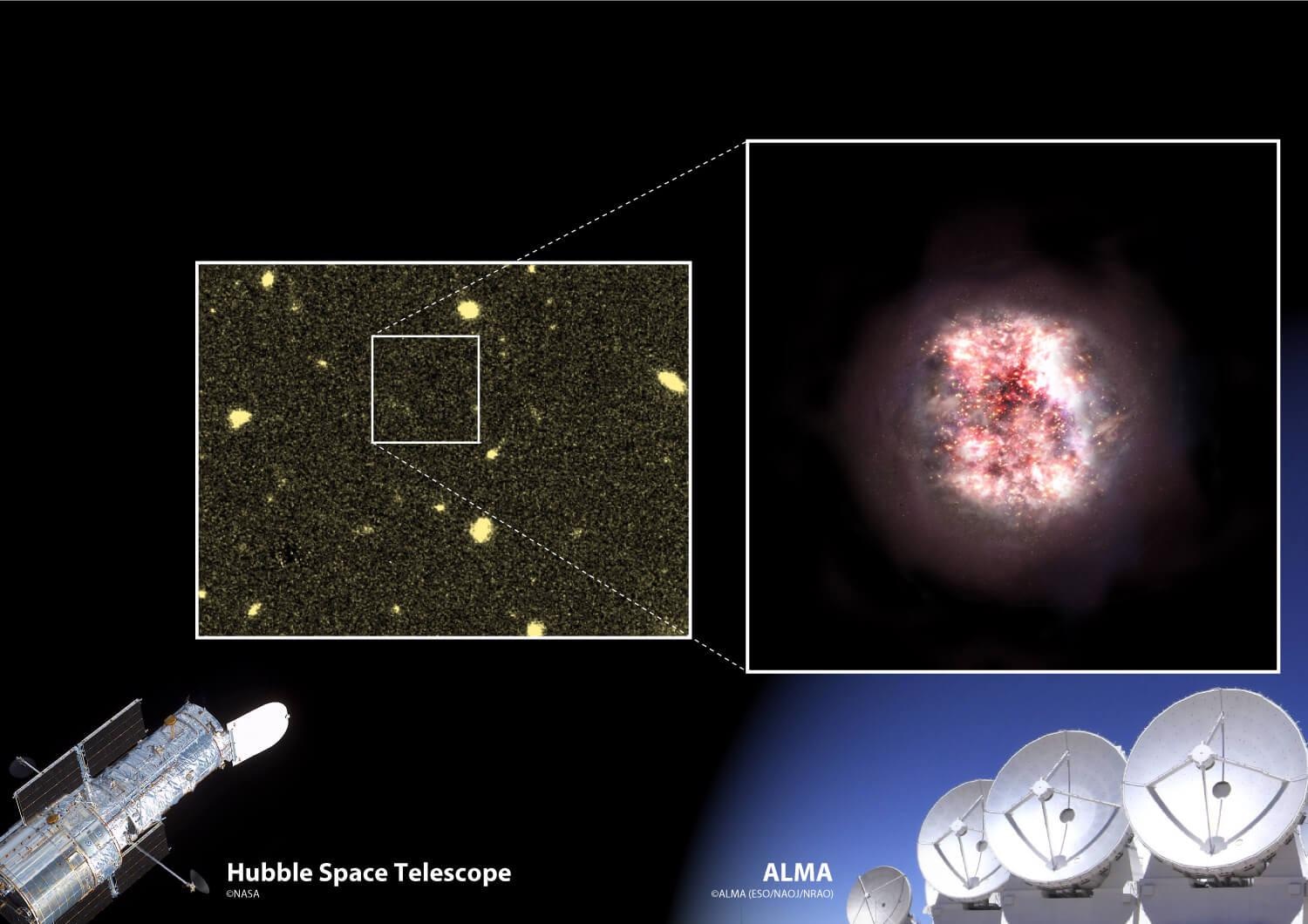Reviewed by Alex SmithNov 23 2021
Scientists at the University of Copenhagen’s Niels Bohr Institute have recently spotted two formerly undetectable galaxies 29 billion light-years away from Earth. The two galaxies have been undetectable to the optical lens of the Hubble Space Telescope, concealed behind a dense layer of cosmic dust that encompasses them.

With the help of the giant ALMA radio telescopes (Atacama Large Milimeter Array) in Chile’s Atacama Desert the two invisible galaxies suddenly appeared. (Image Credit: NASA).
However, with the help of the massive ALMA radio telescopes (Atacama Large Milimeter Array) in Chile’s Atacama Desert, which can record radio waves produced from the coldest, darkest depths of the universe, the two undetectable galaxies unexpectedly appeared.
We were looking at a sample of very distant galaxies, which we already knew existed from the Hubble Space Telescope. And then we noticed that two of them had a neighbor that we didn’t expect to be there at all. As both of these neighboring galaxies are surrounded by dust, some of their light is blocked, making them invisible to Hubble.
Pascal Oesch, Associate Professor, Cosmic Dawn Center, Niels Bohr Institute, University of Copenhagen
Details of the study have been reported in the scientific journal Nature.
10-20% of the Universe’s Galaxies Are Missing
The new discovery indicates that the very early universe comprises more galaxies than formerly assumed. They merely lie concealed behind dust containing small particles from stars. However, they can currently be spotted owing to the extremely sensitive ALMA telescope and the technique used by the scientists.
By comparing these new galaxies with formerly proven sources in the very early universe, about 13 billion years ago, the team approximates that between 10 and 20% of such early galaxies may still stay concealed behind clouds of cosmic dust.
Our discovery demonstrates that up to one in five of the earliest galaxies may have been missing from our map of the heavens. Before we can start to understand when and how galaxies formed in the Universe, we first need a proper accounting.
Pascal Oesch, Associate Professor, Cosmic Dawn Center, Niels Bohr Institute, University of Copenhagen
New Super Telescope Will Find the Missing Galaxies
To help with that mission, NASA, the Canadian Space Agency, and ESA have constructed a new super telescope, the James Webb Space Telescope, which is scheduled to be launched into orbit on December 18, 2021.
With its power and enhanced technology, the telescope will search even deeper into the universe and add new knowledge regarding its origins. This will, among numerous other things, assist Cosmic Dawn scientists at the Niels Bohr Institute to see past the cosmic dust.
The next step is to identify the galaxies we overlooked, because there are far more than we thought. That’s where the James Webb Telescope will be a huge step forward. It will be much more sensitive than Hubble and able to investigate longer wavelengths, which ought to allow us to see these hidden galaxies with ease.
Pascal Oesch, Associate Professor, Cosmic Dawn Center, Niels Bohr Institute, University of Copenhagen
"We are trying to put the big puzzle about the universe’s formation together and answer the most basic question: ‘Where does it all come from?’ The invisible galaxies that we’ve discovered in the early universe are some of the first building blocks of the mature galaxies we see around us in the Universe today. So that’s where it all began," Pascal Oesch added.
Journal Reference:
Fudamoto, Y., et al. (2021) Normal, dust-obscured galaxies in the epoch of reionization. Nature. doi.org/10.1038/s41586-021-03846-z.